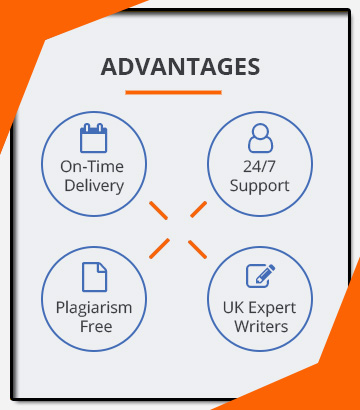|
Learning Outcomes – the learner will:
|
Assessment Criteria – the learner can:
|
Indicative contents
|
|
1. Be able to apply Reflexology practice through clinical assessment, analysis, evaluation, and critical review
|
1.1 Demonstrate development progression of Applied, Clinical Reflexology treatments which includes evidence of:
a) Assessing information to justify treatment options
b) Interpreting visual and tactile observations
c) Assessing need of each study client to provide a holistic overview for effective management of health
d) Determine appropriate organs, systems for treatment of specific conditions
e) Determine appropriate techniques for treatment of specific conditions
f) Evidence a client focused approach to uncover a full range of components that effect health.
g) Recommend alternative Health Providers to support an Integrated approach to Medicine.
h) Select appropriate measurement methodologies to record treatment findings.
i) Critical review and reporting of treatment outcomes.
|
Complex and non-routine treatment planning with need to identify and use relevant understanding, methods, and skills.
Responsibilities; course of action exercising autonomy and judgement within the parameters of Applied Reflexology interpretations.
Skills; adapts and uses treatment protocols. appropriate to the life stage, condition of a client study Methods; clinically assess, analyse and evaluate to provide bespoke treatments with a critical review of outcomes.
|
|
2. Understand how malfunctioning of human anatomy and physiology of macro systems can lead to illness
|
2.1 Describe a range of altered conditions which might benefit from Reflexology.
2.2 Examine scenarios for each macro system and justify evidence-based treatment plans using foundation and advanced reflexology techniques.
|
To understand the multi-faceted processes of pre- determined treatment and conditions, Medical Reports, Medical Dictionary, Epidemiology Reports, Anatomy and Physiology in Illness and Health texts.
Case Studies
|
|
3. Understand how to structure a bespoke Clinical Reflexology treatment to a range of conditions
|
3.1 Discuss the symptoms and signs and together with foundation and advanced reflexology treatment protocols, structure a bespoke clinical treatment for pre-determined conditions.
|
Complex and non-routine treatment planning with need to identify and use relevant understanding, methods, and skills.
Responsibilities; course of action exercising autonomy and judgement within the parameters of Applied Reflexology interpretations.
Skills; adapts and uses treatment protocols appropriate to the condition of a client study. Methods; clinically assess, analyse and evaluate to provide bespoke treatments with a critical review of outcomes.
Demonstrate that they are working and complying with ethical standards of practice and exercising autonomy and judgement. Using practical theoretical and technical understanding to address issues, while remaining aware of the nature and appropriate scope of the reflexology practitioner application.
Formal and Informal sources of support for development of recommendation to other appropriate health providers.
|
|
4. Be able to provide Clinical Reflexology for life limiting and chronic illness
|
4.1 Describe a range of life limiting and chronic conditions.
4.2 Apply bespoke treatments using foundation and advanced reflexology techniques for pre- determined life limiting and chronic illnesses in a clinical environment, under supervision.
4.3 Apply practical reflexology skills for palliative care in a clinical environment, under supervision, identifying areas of caution and contra-indication.
|
Complex and non-routine treatment planning with need to identify and use relevant understanding, methods, and skills.
Responsibilities; course of action exercising autonomy and judgement within the parameters of Applied Reflexology interpretations.
Skills; adapts and uses treatment protocols appropriate to the life stage, condition of a client study. Methods; clinically assess, analyse and evaluate to provide bespoke treatments with a critical review of outcomes.
Demonstrate that they are working and complying with ethical standards of practice and exercising autonomy and judgement. Using practical theoretical and technical understanding to address issues, while remaining aware of the nature and appropriate scope of the reflexology practitioner application.
Formal and Informal sources of support for development of recommendation to other appropriate health providers.
|
|
5. Understand collaborative care and Partnership working
|
5.1 Analyse the principles of collaborative care
5.2 Explain the role of the reflexologist within the multi-disciplinary team.
5.3 Evaluate own role within the team.
|
Trust, respect, willingness, empowerment, effective communication.
Working as part of a health care team in different settings, sharing information appropriately; record keeping; client enabling and empowerment in decision making.
Other health providers
Roles of individual and family members in review
|
|
6. Be able to provide Clinical Reflexology for Men’s Health
|
6.1 Provide bespoke treatments using foundation and advanced reflexology techniques to support men’s health and well-being in a clinical environment, under supervision.
6.2 Apply practical reflexology skills to a male specific condition and evaluate the specific systems, identifying areas of caution and contra- indication.
|
Complex and non-routine treatment planning with need to identify and use relevant understanding, methods, and skills.
Responsibilities; course of action exercising autonomy and judgement within the parameters of Applied Reflexology interpretations.
Skills; adapts and uses treatment protocols appropriate to the life stage, condition, or treatment of a client study.
Methods; clinically assess, analyse and evaluate to provide bespoke treatments with a critical review of outcomes .
Demonstrate that they are working and complying with ethical standards of practice and exercising autonomy and judgement. Using practical theoretical and technical understanding to address issues, while remaining aware of the nature and appropriate scope of the reflexology practitioner application.
Formal and Informal sources of support for development of recommendation to other appropriate health providers.
|
|
7. Be able to provide Clinical Reflexology to promote for Male and Female fertility
|
7.1 Provide reflexology therapy to support the treatment of fertility conditions in a clinical environment, under supervision.
7.2 Evaluate the treatment provided in relation to promote fertility.
|
Both Male and female fertility.
Complex and non-routine treatment planning with need to identify and use relevant understanding, methods, and skills.
Responsibilities; course of action exercising autonomy and judgement within the parameters of Applied Reflexology interpretations.
Skills; adapts and uses treatment protocols appropriate to the life stage, condition, of a client study.
Methods; clinically assess, analyse and evaluate to provide bespoke treatments with a critical review of outcomes.
Demonstrate that they are working and complying with ethical standards of practice and exercising autonomy and judgement. Using practical theoretical and technical understanding to address issues, while remaining aware of the nature and appropriate scope of the reflexology practitioner application.
Formal and Informal sources of support for development of recommendation to other appropriate
|

